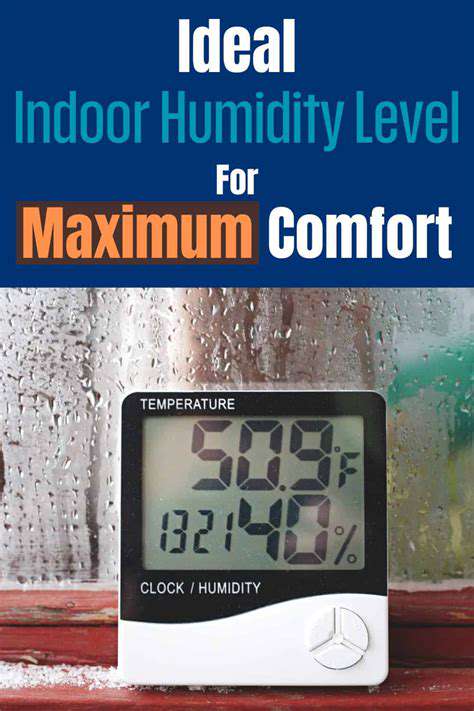How to care for wooden furniture during the summer heat
Understanding the Impact of Summer Heat on Wood
Heat-Induced Expansion and Contraction
Wooden furniture faces unique challenges during summer's intense heat. The natural tendency of wood to expand in heat and contract when cooled creates structural stress that manifests as warping, cracking, and joint loosening. These effects become particularly pronounced in regions experiencing dramatic daily temperature fluctuations.
Sunlight exposure compounds these issues dramatically. The combination of UV radiation and thermal expansion creates a destructive cycle that gradually degrades furniture quality. Strategic placement away from direct sunlight and climate-controlled environments significantly reduces these damaging effects.
Moisture and Humidity Concerns
Summer humidity presents a separate but equally damaging threat. Wood's porous nature makes it particularly susceptible to moisture absorption, leading to swelling that can permanently alter furniture dimensions. This moisture retention also creates ideal conditions for mold and mildew growth, which can compromise both appearance and structural integrity.
The dual assault of heat and humidity demands proactive measures. Maintaining indoor humidity between 40-60% through proper ventilation and dehumidification protects furniture while creating more comfortable living spaces. This balanced approach prevents the extremes that cause most wood damage.
Protecting Your Wood Investment
Preventative care represents the most cost-effective preservation strategy. Simple actions like rotating furniture positions seasonally and using UV-protective window films can dramatically extend furniture lifespan. Regular inspections for early signs of damage allow for timely interventions before problems escalate.
Climate control solutions deserve particular attention. Whole-house humidification systems provide the most consistent protection, while portable units offer targeted solutions for valuable pieces. Remember that gradual environmental changes cause less stress than sudden fluctuations, so maintaining stability proves more important than achieving perfect conditions.
Maintaining Ideal Humidity Levels

Understanding Relative Humidity
The relationship between air temperature and moisture content fundamentally impacts both comfort and material preservation. Relative humidity measurements provide critical data for maintaining optimal conditions. This measurement becomes particularly crucial when protecting sensitive materials like wood, paper, or musical instruments.
The Impact on Indoor Air Quality
Humidity levels directly influence airborne contaminant levels. Excessive moisture encourages dust mite populations and microbial growth, while arid conditions increase particulate matter circulation. Balanced humidity creates an environment where neither extreme dominates.
The Effects of Temperature Fluctuations
Temperature changes automatically alter relative humidity percentages, meaning climate control requires monitoring both variables. Evening temperature drops frequently create condensation issues that morning sun then evaporates, creating daily cycles of expansion and contraction in home materials.
Maintaining Optimal Humidity Levels for Health
The human respiratory system functions best within specific humidity ranges. Proper humidity reduces influenza virus survival rates while preventing the mucous membrane dryness that increases infection susceptibility. These health benefits combine with material preservation advantages to create compelling reasons for humidity management.
The Role of Ventilation in Humidity Control
Strategic airflow management often proves more effective than mechanical solutions. Cross-ventilation techniques utilizing cooler morning air can naturally regulate humidity before temperatures peak. This approach reduces energy consumption while maintaining comfort.
Regular Cleaning and Maintenance

Surface Cleaning Techniques
Different wood finishes require customized cleaning approaches. Oil-finished pieces benefit from occasional reconditioning, while lacquered surfaces need gentle, non-abrasive cleaners. Understanding your furniture's finish type ensures proper care without accidental damage.
Seasonal Maintenance Cycles
Implementing quarterly deep-cleaning routines catches problems before they become visible. This includes checking for loose joinery, reapplying protective coatings, and addressing any developing moisture issues. Proactive maintenance prevents minor issues from becoming major repairs.
Addressing Specific Summer Concerns

Temperature Management Strategies
Gradual acclimation helps furniture adjust to seasonal changes. When possible, transition pieces slowly between climate-controlled and non-conditioned spaces. This reduces the shock that causes cracking and warping.
Protective Measures During Peak Heat
During heatwaves, additional precautions become necessary. Light-colored covers reflect sunlight while allowing air circulation, and temporary relocation of valuable pieces to cooler areas can prevent irreversible damage. These measures prove particularly important for antique furniture with historical value.
- Top trends in modern wooden furniture for small spaces
- The benefits of modular wooden furniture for dynamic spaces
- How to design a study area with functional wooden furniture
- Effective Natural Cleaning Solutions for a Healthier Home
- Creating an Efficient Workspace: Key to Enhancing Focus and Productivity
- The Ultimate Guide to Designing a Productive Work Area
- Creating a Consistent Schedule: A Key to Enhanced Focus and Productivity
- Enhancing Your Space: How Ergonomics Boosts Comfort in Daily Life
- Essential Time Management Principles for Productivity
- Maximizing Productivity Through Effective Time Management Strategies
- How to pick the right wooden bookshelf for your study
- How to choose the right wooden furniture for your bedroom décor